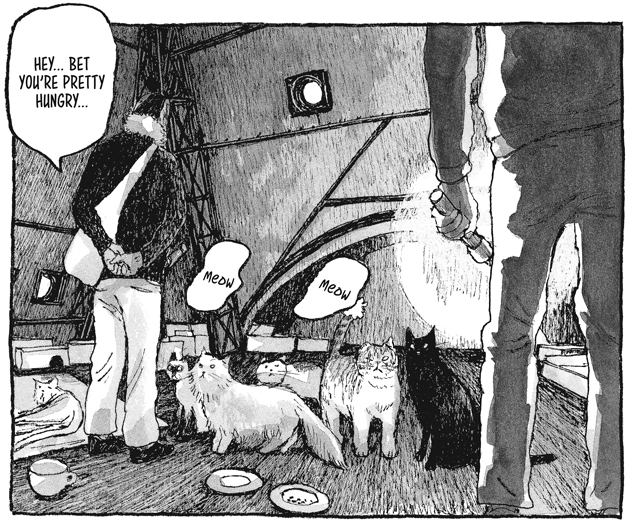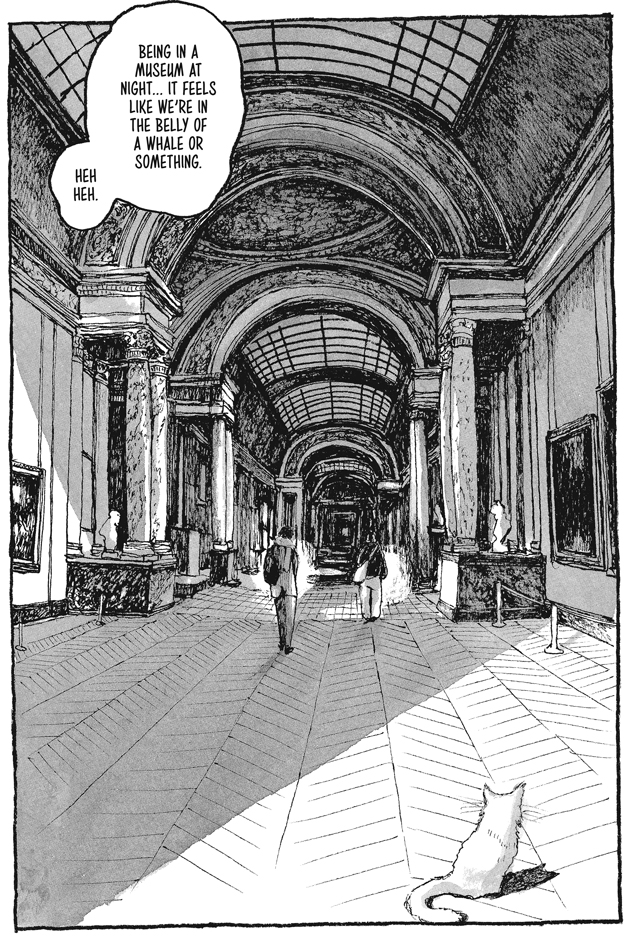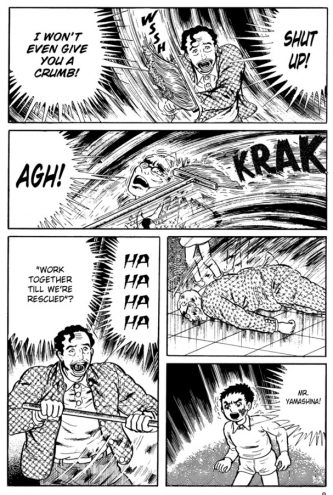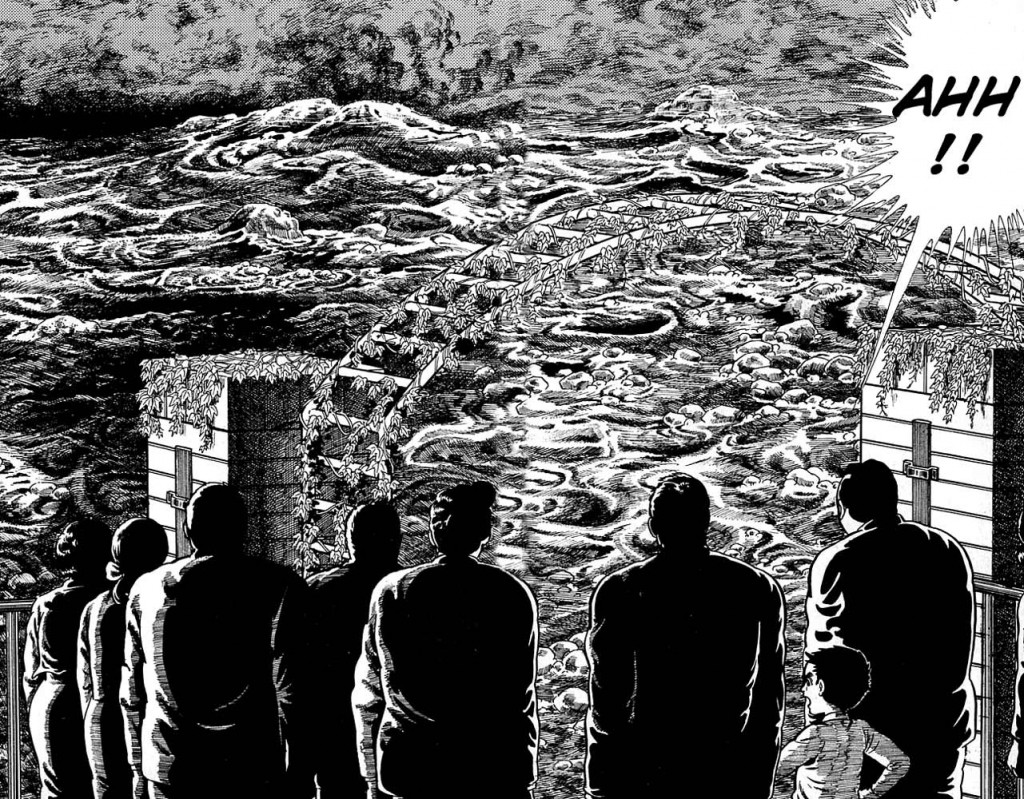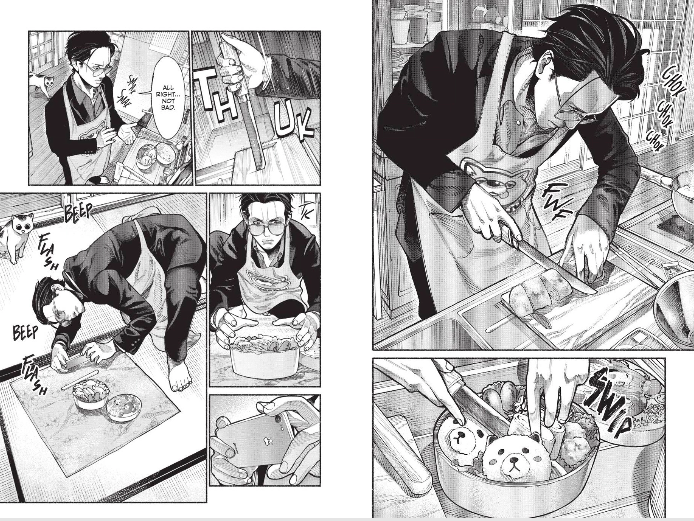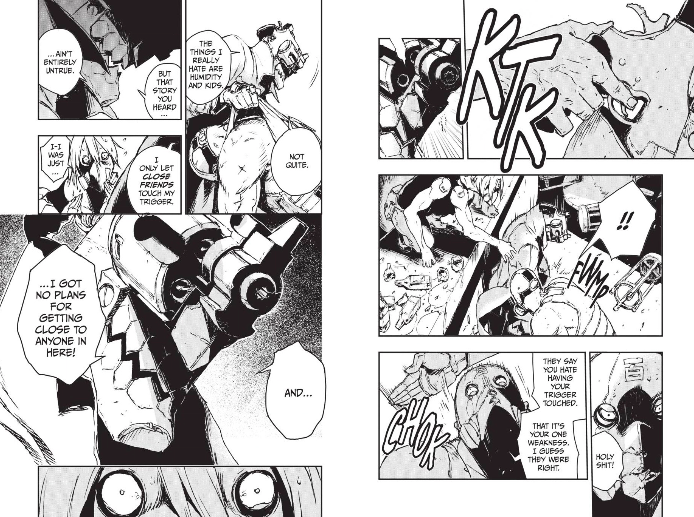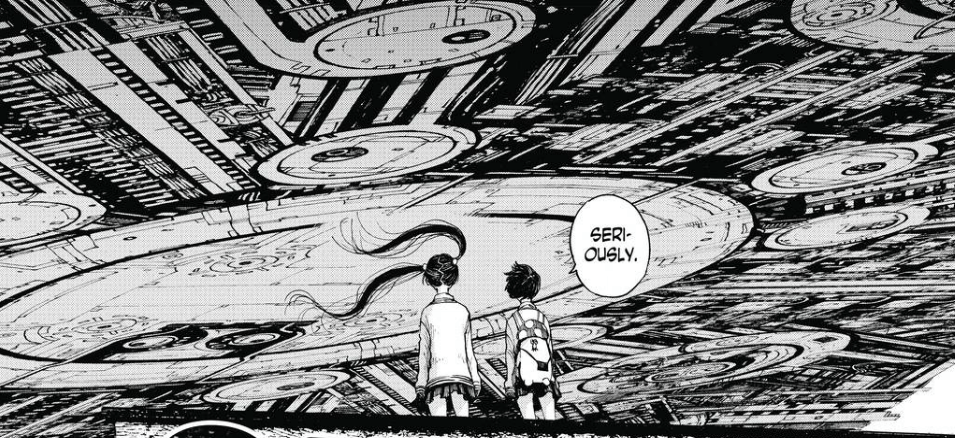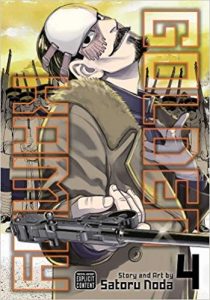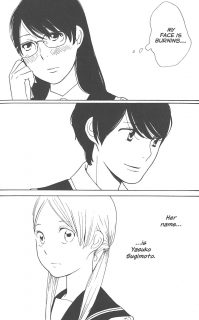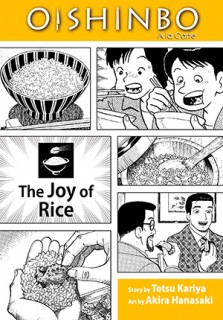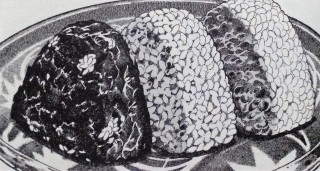Crazy Food Truck isn’t the worst manga I’ve read this year, but it’s one of the most disappointing, marred by lazy writing, paper-thin characterizations, and excessive fan service.
The most basic problem is that Crazy Food Truck reads more like a rough outline than a fully realized story. The premise is–if you’ll pardon the expression–half-baked: a gruff ex-soldier ekes out a living by operating a food truck in a post-apocalyptic wasteland. In scene after scene, Gordon laments the lack of paying customers, a joke that doesn’t square with the fact that he’s mounted a cannon on his truck to ward off the rogue military officers and exploitative creeps who inhabit this desert. Gordon’s cooking exploits aren’t particularly interesting or educational, either; the scenes of him drying squid meat or waxing poetic about mustard are executed in such a perfunctory way that they could have been lifted from almost any food manga.
Another issue is that Gordon is less a person than an archetype, a man with a secret military past who reluctantly helps people in need, always getting the upper hand in situations where he’s outmanned and outgunned. Early in chapter one, for example, he stumbles across a teenager in a sleeping bag. Arisa initially seems helpless and kind of dim, but turns out to be just as lethal as Gordon, with considerable martial arts skills and weapons expertise. Her bubble-headed observations and refusal to wear clothing grate on Gordon’s nerves, yet Gordon tolerates her child-like behavior, allowing her to tag along with him even after she eats all his food. (Surely that would be a bridge too far for a cook, no?) We never learn why Arisa is on the run from authorities, or why she acts like a six-year-old; she’s just a pin-up who pigs out with gusto. Fair enough, I guess, since this series ran in Monthly Comic @Bunch, but the infantilization of her character makes her exchanges with Gordon more icky than amusing, and gives us little insight into either character’s motivations.
Perhaps the most serious problem with Crazy Food Truck is Rokurou Ogaki’s lack of vision. A story this outlandish needs bold, individual artwork that matches the intensity and silliness of its central conceit, but Ogaki opts for a blandly synthetic approach that borrows liberally from better series. Each character seems to have been created by a different person: some are grotesquely cartoonish—the better to emphasize their villainy—while others look like they’ve escaped from Food Wars or Golden Kamuy. The backgrounds, too, lack panache, even when Ogaki teases the idea that the world was once a more lush place teeming with animals and people. In the absence of a distinctive, unifying style, the characters and objects look like they’ve been clipped out of different magazines and pasted into the panels.
It’s a shame that Crazy Food Truck is so indifferently executed, as I thought its Mad Max-meets-Food-Network premise sounded like fun. Alas, it’s the manga equivalent of a failed Iron Chef experiment, a mish-mash of ingredients don’t quite add up to a tasty dish. Not recommended.
CRAZY FOOD TRUCK, VOL. 1 • BY ROKUROU OGAKI • TRANSLATED BY AMANDA HALEY • ADAPTED BY JENNIFER LEBLANC • LETTERING BY E.K. WEAVER, JEANNIE LEE, SARA LINSLEY, AND JAMES GAUBATZ • VIZ MEDIA • RATED MATURE (NUDITY AND VIOLENCE) • 198 pp.


